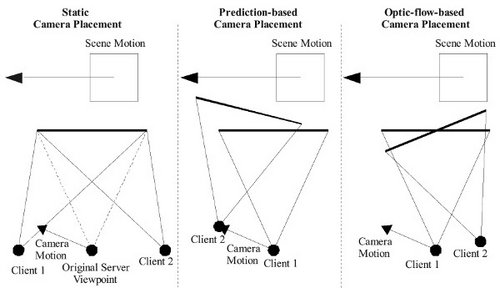Abstract
Display systems typically operate at a minimum rate of 60 Hz. However, existing VR-architectures generally produce application updates at a lower rate. Consequently, the display is not updated by the application every display frame. This causes a number of undesirable perceptual artifacts. We describe an architecture that provides a programmable display layer (PDL) in order to generate updated display frames. This replaces the default display behavior of repeating application frames until an update is available. We will show three benefits of the architecture typical to VR. First, smooth motion is provided by generating intermediate display frames by per-pixel depth-image warping using 3D motion fields. Smooth motion eliminates various perceptual artifacts due to judder. Second, we implement fine-grained latency reduction at the display frame level using a synchronized prediction of simulation objects and the viewpoint. This improves the average quality and consistency of latency reduction. Third, a crosstalk reduction algorithm for consecutive display frames is implemented, which improves the quality of stereoscopic images. To evaluate the architecture, we compare image quality and latency to that of a classic level-of-detail approach.
Papers and Documents
Smit, F.A., van Liere, R., Froehlich, B.
A Programmable Display Layer for Virtual Reality System Architectures
IEEE Transactions on Visualization and Computer Graphics (TVCG), vol 16 (1), pp 28-42, 2010.
[preprint]

